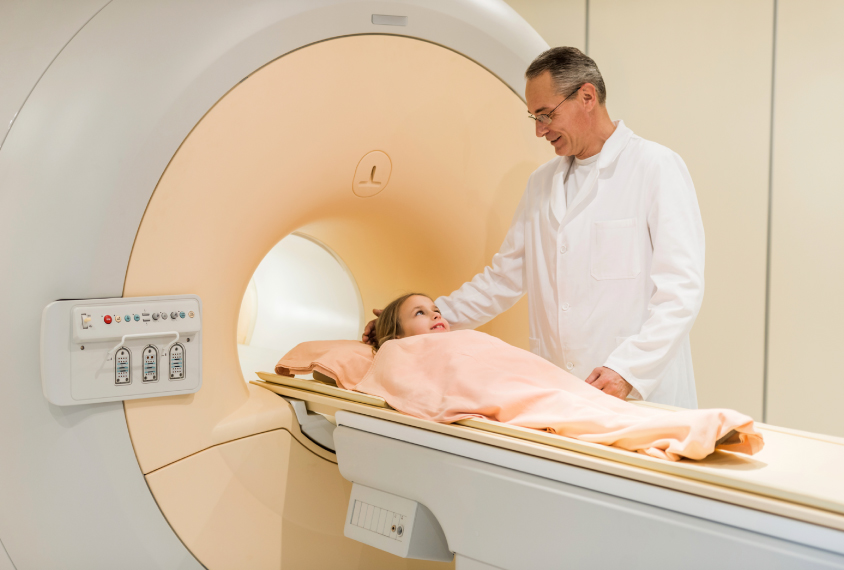
© iStock.com / skynesher
THIS ARTICLE IS MORE THAN FIVE YEARS OLD
This article is more than five years old. Autism research — and science in general — is constantly evolving, so older articles may contain information or theories that have been reevaluated since their original publication date.
People with autism show unusually frequent fluctuations in synchronized activity between brain regions, suggests a new imaging study. The findings may help to explain the inconsistent results from studies of connectivity in autism1.
Numerous research teams have uncovered altered connectivity in people with autism, but their findings vary: Some report that the brains of people with autism are too strongly connected — that is, too synchronous — others suggest the connections are are too weak, and a few find that both patterns exist in different regions of the brain.
The new study, published in April in Brain Connectivity, provides a possible explanation for these discrepancies. It suggests that the predominant patterns of connectivity in the brain of a person with autism vary substantially from minute to minute.
Until now, scientists studying synchronized brain activity in autism have measured the net change in activity across scans taken over five or more minutes. They have not accounted for moment-to-moment fluctuations in activity, however.
“We should really become much more aware that we have only looked at connectivity in a very limited sense,” says lead investigator Ralph-Axel Müller, professor of psychology at San Diego State University.
The findings are “absolutely fascinating” and suggest that the connections in autism are not consistently atypical, says Tal Kenet, instructor in neurology at Massachusetts General Hospital, who was not involved in the study. “In autism, you get a much more variable result, and part of that means that occasionally, their connections are just fine,” she says.
In flux:
The researchers analyzed brain scans from 76 children and adults with autism from the Autism Brain Imaging Data Exchange, a repository of scans from more than 1,000 people. They compared the data with scans from 76 controls of similar age, gender, intelligence and handedness. The snapshots of brain activity were taken every two seconds over 5 to 10 minutes while the participants lay resting in the scanner.
Müller’s team looked at synchronized activity between 91 pairs of brain regions that previous studies have flagged as being altered in autism. First, they measured the synchrony over the entire imaging session, and identified eight pairs of brain areas that appear to be weakly connected in people with autism.
The researchers then looked at how activity between these regions fluctuates over time. In a ‘sliding window’ analysis, they looked at the activity during the first 30-second ‘window’ of a session. They then shifted the window by 8 seconds and took another 30-second snapshot. They repeated this process until they had covered the entire imaging session for each participant.
Their analysis revealed that activity in three of the eight pairs of underconnected brain areas fluctuates more in people with autism than in controls. The apparent underconnectivity in autism is due, in large part, to a greater variation in that connectivity over time.
“There are more frequent changes in functional connectivity across a scan of 5 or 10 minutes in autism, and that’s why overall it seems to be reduced,” Müller says. “But in fact it reaches very high levels at some points, and then goes down.”
Out of sync:
The findings held up when the researchers used windows of 40, 50 or 60 seconds. “The results remained qualitatively the same, which to me reinforces that they’re on to something real,” Kenet says.
The researchers repeated their analyses using a new set of scans they collected from 32 children with autism and 32 controls. They found six pairs of regions that show net underconnectivity in people with autism relative to controls. One of these pairs is also weakly connected in the initial 76 individuals with autism. As before, however, the connectivity between this pair of regions is highly variable over time.
The findings suggest that previous connectivity results in people with autism need to be reexamined.
“This helps us develop a solution to one of the ongoing conundrums that we have in the field, that has to do with whether or not the brains of individuals with autism are overconnected or underconnected,” says Marlene Behrmann, professor of psychology at Carnegie Mellon University in Pittsburgh, who was not involved in the work.
“This paper tells us that it really depends on whether or not you’re measuring the connectivity during periods of high connectivity levels or low connectivity levels,” she says. “This variability should really be taken into account.”
By joining the discussion, you agree to our privacy policy.